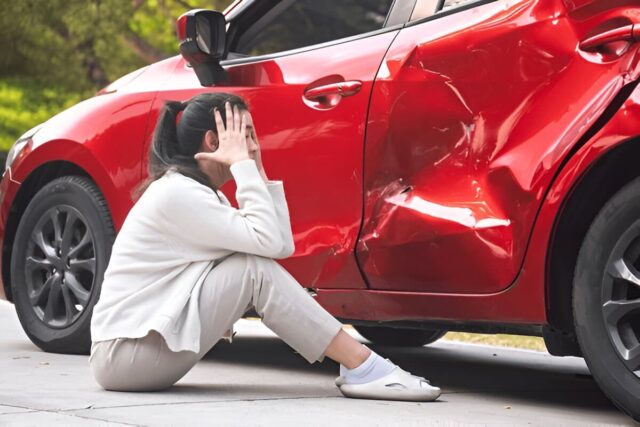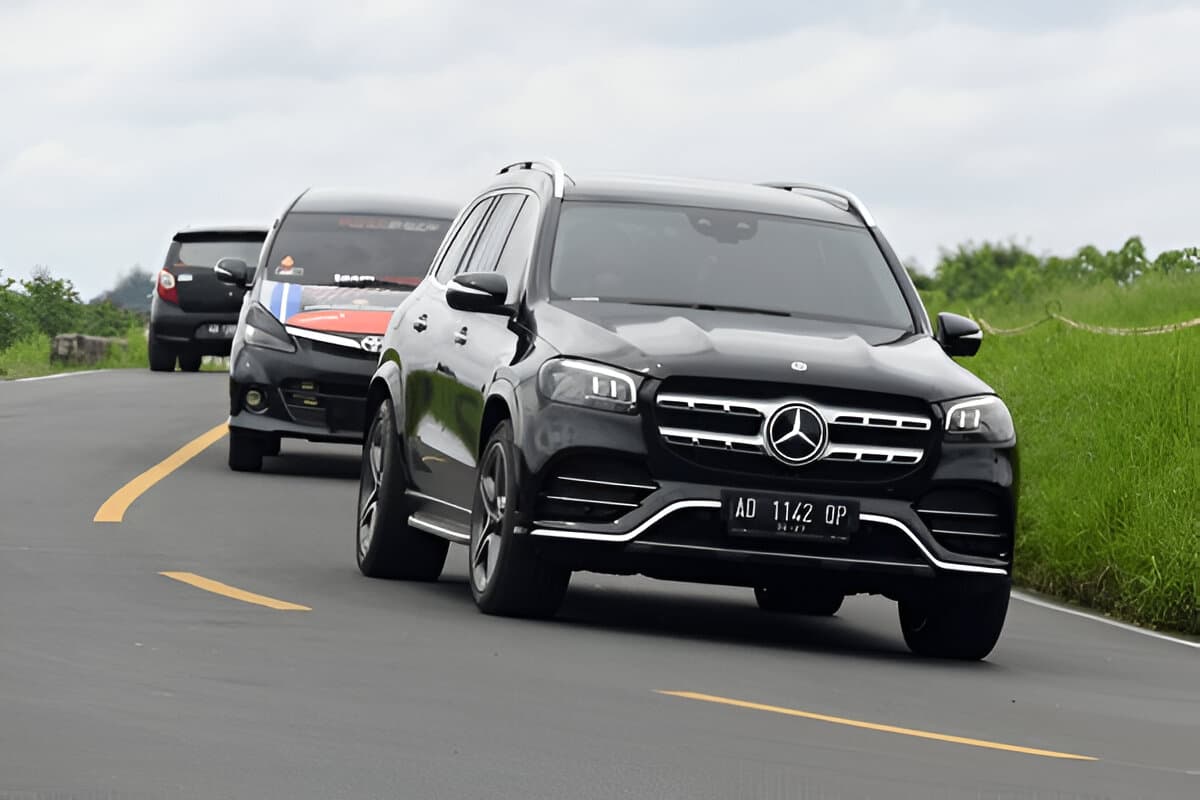When an accident involves a left-turning vehicle, the law generally presumes the turning driver is at fault. This is because traffic laws in Arkansas, like in most states, require a driver turning left to yield the right-of-way to all oncoming vehicles.
However, this initial presumption isn’t the final word. Insurance companies on both sides will scrutinize every action to determine responsibility-some of which they may try to pin on the other driver.
In Arkansas, multiple parties could share some degree of responsibility for the accident. This is why legal representation in these cases is so important. When you’re hurting and bills are piling up, you’re in a vulnerable situation. Arkansas car accident attorneys can help ensure your case is handled fairly and that you receive the compensation you deserve.
As lawyers who handle car accident claims in Arkansas, we understand how to investigate the intricate details of a left-turn collision. If a crash has left you injured and uncertain about your rights, call Caddell Reynolds Law Firm for a free consultation at (479) 782-5297.
The Left-Turn Paradox: Why a Simple Turn is So Uncommonly Dangerous
It seems straightforward: check for traffic, turn the wheel. Yet, this simple maneuver is responsible for a disproportionate number of collisions.
Major logistics companies have famously re-engineered their entire delivery routes to minimize left turns. They recognized a simple truth backed by data: avoiding left turns saves fuel, time, and, most importantly, prevents accidents.
The Numbers Tell a Sobering Story
According to recent data from the Federal Highway Administration (FHWA), roughly one-quarter of traffic fatalities and about one-half of all traffic injuries in the United States are attributed to intersections. Approximately 22% of all car accidents involve a left-turning vehicle, and 53% of all cross-path accidents are the result of left turns. The Federal Highway Administration reports approximately 2.5 million intersection accidents annually, with most of these crashes involving left turns.
These frequently result in side-impact, or “T-bone,” collisions. These are among the most severe types of accidents because the sides of vehicles offer far less protection than the front or rear, leading to more serious injuries.
What Arkansas Law Says About Turning Left
Your Legal Duty to Yield the Right-of-Way
The starting point for any left-turn accident claim in Arkansas is the law itself. Arkansas Code § 27-51-502 states that a driver intending to turn left at an intersection must yield the right-of-way to any vehicle approaching from the opposite direction that is close enough to constitute an immediate hazard.
What Does “Right-of-Way” Actually Mean?
In simple terms, “right-of-way” is the legal permission to proceed before other vehicles in a specific situation. When you are turning left, the oncoming traffic has this right, and you have a legal duty to wait for a safe gap before you proceed. Failing to do so is the primary definition of negligence in these cases.
Negligence is a legal term that means someone failed to act with the same level of reasonable care that an ordinary person would have in the same situation. When that failure causes harm, the negligent person can be held financially responsible.
But Are You Automatically at Fault? Unpacking the Exceptions
While the turning driver frequently bears the initial responsibility, the analysis does not end there. A collision is rarely the result of just one decision, especially when you are hit while making a left turn under what you believed were safe conditions.
When the Oncoming Driver Was Speeding
Consider this scenario: you judge the gap in traffic to be safe, but the oncoming car is traveling much faster than the speed limit. It closes that gap far quicker than anyone could reasonably anticipate. This isn’t a failure on your part to judge the gap, but a failure on their part to obey the law.
Our firm investigates these crashes by:
- Analyzing the Police Report: We look for the officer’s notes on speed, skid marks, and other contributing factors.
- Seeking Accident Reconstruction: In some cases, we can work with professionals who analyze vehicle damage and physical evidence to calculate speed at the moment of impact.
- Locating Surveillance Footage: Nearby businesses or traffic cameras may have recorded the collision, providing indisputable evidence of the other driver’s speed.
When the Oncoming Driver Ran a Red Light or Stop Sign
If you began your turn on a green arrow or a standard green light after it was clear, and another driver entered the intersection illegally against a red light, they have violated your right-of-way. In this situation, the fault may shift squarely to them.
Evidence is Key: Witness testimony becomes incredibly important here, as does any available traffic camera footage. These systems, governed by standards from the Manual on Uniform Traffic Control Devices (MUTCD), provide an objective record of who had the right to be in the intersection.
When Your View Was Unavoidably Obstructed
 Sometimes, it’s impossible to see the oncoming vehicle until it’s too late. Your view might have been blocked by:
Sometimes, it’s impossible to see the oncoming vehicle until it’s too late. Your view might have been blocked by:
- A large truck or bus in another lane.
- Poorly placed signs, overgrown landscaping, or a building corner creating a blind spot.
- Weather conditions like blinding sun or heavy fog.
While you still have a duty to proceed with caution, these factors could be used to argue that your ability to judge the situation was compromised by conditions outside your control.
Shared Fault in Arkansas: The Law of Comparative Negligence
It Isn’t Always All or Nothing
In many left-turn accidents, an investigation reveals that both drivers made mistakes. Perhaps you misjudged the gap in traffic, but the other driver was also texting and traveling 10 miles over the speed limit. As we alluded to in the introduction, Arkansas law addresses this reality with a system called modified comparative negligence.
How Comparative Negligence Works: A Simple Analogy
Think of fault as a pie chart totaling 100%. A judge or jury listens to all the evidence and assigns a percentage of fault to each driver involved in the collision. Your ability to recover damages depends on your slice of that pie.
The 50% Rule: Under Arkansas’s modified system, you can still recover damages as long as your percentage of fault is less than 50%.
- Example: If you are found to be 30% at fault and the other driver 70%, you can recover 70% of your total damages for medical bills, lost wages, and pain and suffering.
- The Harsh Reality: However, if you are found to be 50% or more at fault, you are legally barred from recovering any compensation at all.
Protecting Your Rights from Home After the Accident
Communicate with Care
The other driver’s insurance adjuster will likely call you. Their job is to minimize the amount their company has to pay. You are not required to give them a recorded statement, and it is wise to decline until you have spoken with a lawyer. These statements can be used to twist your words and assign you more blame than you actually deserve.
Instead of giving a statement, try saying: “I am not prepared to discuss the details of the accident at this time. Please direct all future communication to my attorney.”
This simple sentence protects your rights and shifts the conversation to a professional who is advocating for you.
Organize Your Documents
Begin gathering everything related to the accident in one place. A simple folder or box is all you need. This should include:
- The official police accident report.
- Photos or videos you took of the scene, your vehicle, and your injuries.
- The other driver’s information and insurance details.
- Any receipts for towing, rental cars, or other immediate expenses.
Document Your Medical Journey
Keep a simple journal detailing your pain levels, doctor’s appointments, and how your injuries are affecting your daily life. It doesn’t have to be elaborate. Note what hurts, what activities you can no longer do, and any appointments or treatments you receive. Keep all medical bills and records organized.
Do Not Post on Social Media
Assume anything you post online will be seen by the insurance company. They regularly scan social media profiles for photos or comments that they can use against you. An innocent picture of you smiling at a family dinner could be twisted to suggest your injuries are not as severe as you claim. It is best to refrain from posting about the accident or your activities until your case is resolved.
FAQ for Left-Turn Accidents in Arkansas
What if the other driver claims I didn’t have my turn signal on?
This is a common defense tactic. The absence of a turn signal can be used to argue you were partially at fault. However, it isn’t a final determination of liability. Witness statements, the positioning of the vehicles, and the other driver’s own actions-such as their speed and level of attention-will all be important in determining how much this factor matters in the broader context of the accident.
Does it matter if the light was yellow when I started my turn?
Turning on a yellow light is legally permissible in Arkansas, but you still have the duty to ensure the intersection is clear of oncoming traffic that would be unable to stop safely. A yellow light doesn’t give you absolute right-of-way to turn. This creates a complex factual question about timing and reasonableness that frequently requires careful analysis of all available evidence.
How long do I have to file a claim in Arkansas?
In Arkansas, the statute of limitations for filing a personal injury lawsuit is generally three years from the date of the accident. While this may seem like a long time, waiting is never advisable. Evidence gets lost, surveillance footage is erased, and the memories of witnesses fade. The sooner you contact legal council, the sooner they will start working to preserve every shred of evidence and file all documentation before the deadline.
What if the other vehicle was a motorcycle?
The same rules of the road apply to all vehicles. However, because motorcycles are smaller and harder to see, drivers of passenger cars and trucks have an even higher duty of care to look for them.
The police report says I’m at fault. Is my case over?
Not necessarily. A police officer’s opinion on fault, written at a busy crash scene, is not the final legal determination. The officer did not witness the crash, and their conclusion is based on limited evidence gathered in a short amount of time. We can, and frequently do, challenge the findings in a police report with a more thorough investigation. Don’t think your case is hopeless-take advantage of your personal injury attorney’s free consultation to get your case evaluated and see if there is a path forward.
Let Us Determine What’s Next
The physics of a left-turn accident are complicated, and the legal process that follows is no different. You should not have to piece together evidence and argue with insurance companies while trying to recover from your injuries. Let our team of Arkansas personal injury lawyers handle the investigation, build your case, and fight to ensure fault is assigned fairly.
If you were injured in a left-turn crash, contact the Caddell Reynolds Law Firm today. Your story deserves to be heard, and the details matter. For a free and confidential review of your case, call us now at (479) 782-5297.

